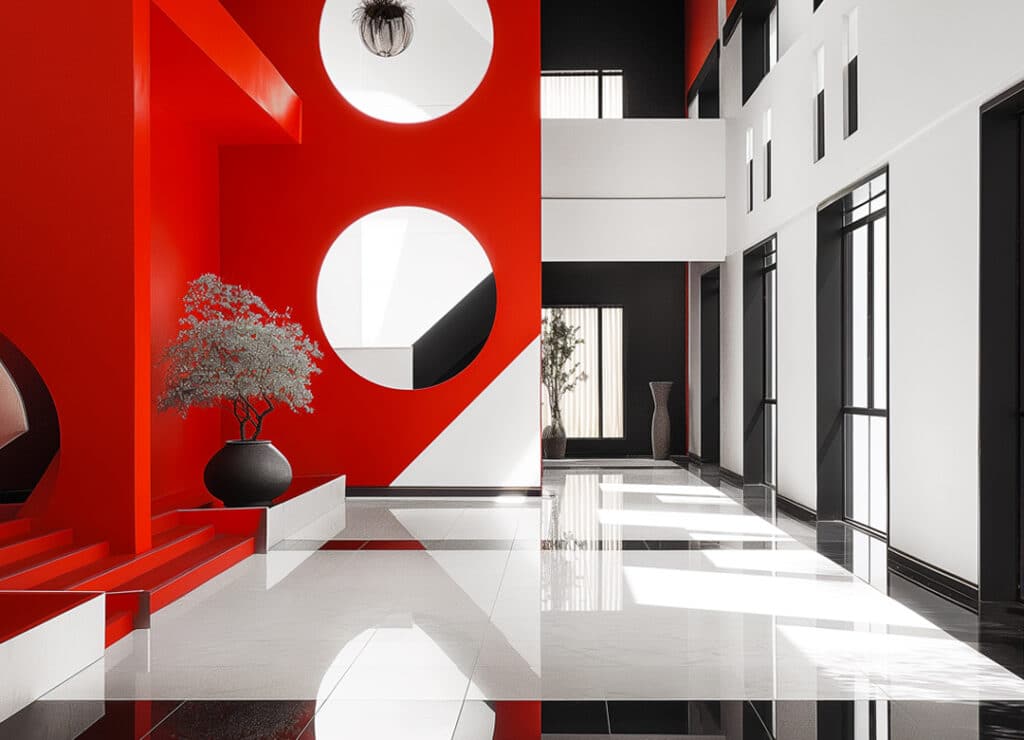See how our top picks of soft and hard hospitality brands build on their brand perception to fuel their marketing + grow guest bookings
Image: Graduate Palo Alto, the brand’s 33rd hotel, opened down the road from Stanford University. Graduate Hotels.
Lately, I’ve been having conversations with Google’s Gemini around the concept of “cool” in the context of boutique hotels. Latest question: “Are Graduate Hotels cooler than Ace Hotels, or vice versa?”
Gemini replied: “That depends on what you’re looking for in a hotel. Here’s a breakdown of their vibes to help you decide…”
And then Gemini literally broke down their vibes.
The reason I asked in the first place is the absolute proliferation of boutique hotel concepts. With such an explosion of brands (culminating in almost 150,000 new rooms since 2008), I have to wonder if some of the best are really that different, or being copy/pasted like tried and true business models. How are they not only succeeding, but unstoppable?
“Since its creation in 2008 with Choice’s Ascend Collection and bolstered in 2010 by Marriott’s Autograph Collection, the soft-brand category has grown nearly sixfold to roughly 149,000 rooms.”
– CBRE, “Brands and Brand Families Matter” Report
For example, back to Graduate Hotels – “Unapologetically Unique Hospitality.” Since 2014 (I’m mouthing “TEN YEARS” with both hands raised above my head), Graduate Hotels has expanded from a handful of refurbished properties in college towns (Athens, Georgia, Ann Arbor, Michigan) to somewhat of a hospitality empire of 37 locations that span the US and even extend across the pond to Cambridge and Oxford (posh!). Two years ago, Kevin Osterhaus, the president of Graduate Hotels, confirmed, “We’ve added 19 properties since 2019.” They’ve added more since, and several are in the works as we speak – scroll for the whole timeline. They’ve filmed Vogue editor Andre León Talley visiting his portrait at Graduate Providence; they’ve won a spot on Fast Company’s “50 Most Innovative Companies”; they’ve released a coffee table book … They’ve done more than most people will ever do in their lives. And without the ownership of a huge hotel chain?
Yes-ish. At least they did for a time.
As of March 2024, Graduate Hotels was acquired by Hilton Worldwide Holdings Inc. And that’s not all … there’s a plot twist: Hilton franchises the Graduate Hotels brand instead of directly owning the hotel properties themselves. Here’s what that means:
- Ownership: AJ Capital Partners, the original founder of Graduate Hotels, still owns the real estate of the existing Graduate properties.
- Operations: Graduate Hotels will operate under long-term franchise agreements with Hilton. So, while Graduate retains its brand identity and unique style, it benefits from Hilton’s infrastructure and resources for things like reservations and loyalty programs.
Back to that unstoppable growth just referenced, Hilton said it believes the addressable market for the Graduate brand is 400-500 hotels globally (we’re currently under 40 locations).
This boutique concept fairytale led me to CBRE’s “Brand and Brand Families Matter: A look back to 2013 – 2022” – an insight-packed report analyzing ten years of hotel brand performance. Yes, the title says it all – brands matter – but what it reveals after a closer look is so much more important: brands matter to other brands, too. Within brand building, we know hard and soft brands to be interchangeable with legacy and challenger brands. Within the hospitality industry, “soft brands” and “hard brands” may as well be “cool” brands and “in-need-of-cool” brands. Here’s a breakdown of the key differences:
- Soft Brand: Offers independent hotels the opportunity to leverage a larger brand’s resources (marketing, distribution channels, loyalty programs) while retaining their own distinct identity (name, design).
- Hard Brand: Represents a standardized hotel experience with a strong brand identity. Think of chains like Hilton, Marriott, or Hampton Inn. These hotels typically have strict quality control standards, consistent design elements, and easily recognizable names.
When combining forces, that’s where the success and unstoppable expansion come from.
Some of the most interesting key takeaways from CBRE’s report reveal this codependent relationship between the two types of brands.
- While soft-brand hotels have distinctive design styles and the regional flair of leading independent properties, their affiliation with a global brand family gives them access to wide-ranging marketing channels, customer loyalty rewards programs, dedicated suppliers, staff training models, back-of-house operational standards, and new technologies.
- As higher-priced markets have become more saturated, creating new niche brands in lower-priced tiers has become increasingly necessary for unit growth, which is a key driver of profits.
- Although still a small percentage of supply overall, soft brands will be a meaningful driver of growth in the future, particularly in the upper-upscale and luxury segments. Most major hotel companies now have soft brands.
We’ve made our own list (and in the words of Gemini, broken down the vibes) of some hospitality brands (soft and hard) elevating their brand perception to fuel their marketing potential and grow guest bookings. In no particular order …
Image: Conde Nast Traveler
- From Hilton’s Curio Collection: Hotel del Coronado, Coronado, California
Even though Hilton’s Curio Collection offers choice picks of upscale and unique hotels, each with its own distinct personality and story, some still have a particular way of standing out. Enter Hotel del Coronado, a legendary landmark hotel in Coronado, California, described by Conde Nast Traveler as “one of San Diego’s most grand, iconic stays.” And it seems, since its opening in 1881, it has always been that way. The hotel features Victorian-era architecture, beautiful beachfront access, and a rich history that has attracted celebrities and vacationers for over a century. Some of that history includes a feature in Marilyn Monroe’s film Some Like It Hot (love). Other easily marketable brand touches include a core-heavy water aerobics class where you literally slip into a mermaid tail for the duration of the class, in-room doggy dining, and neighbor status to one of San Diego’s best off-leash dog beaches. Which makes you wonder … How does a Hilton score such a location?
Jenna Hackett, global brand leader for Curio and Tapestry Collections by Hilton provides some insight. “Hard brands have certain requirements for key count and other attributes that make it challenging for owners to build in some destinations,” she noted. “Collections have the unique opportunity to provide boutique experiences in highly coveted getaway locations, such as European city centers and resort destinations.”
Beyond its location alone, the Hotel del Coronado consistently receives high praise for its service, comfort, and unique atmosphere (the architecture is a core component of the property’s allure). And most importantly, all of this charm translates to popularity reflected in booking rates and guest reviews, making it a strong contender for top honors within the Curio Collection.
[Another favorite we have to include…]
Hilton’s Curio Collection: Baker’s Cay Resort Key Largo
Image: The Eliza Jane Hotel
- From Hyatt’s The Unbound Collection: The Eliza Jane Hotel, New Orleans, LA
The Eliza Jane Hotel in New Orleans is a special boutique hotel that stands out for several reasons. First, there’s its rich history and design: Built within nine historic warehouses from the 19th century, the Eliza Jane seamlessly blends the past with the present. Exposed brick walls and industrial details pay homage to the building’s heritage, while plush furnishings and modern amenities offer a luxurious and stylish stay. And you can’t ignore its Journalism Theme, which honors the building’s past life as the headquarters of The Daily Picayune, a once-influential New Orleans newspaper. This theme is subtly woven throughout the hotel’s design, with vintage typewriters, newspaper clippings, and photography books adding a touch of literary flair. And it wouldn’t be New Orleans without a special emphasis on culinary delights. The hotel’s restaurant, Couvant, serves delicious French cuisine with a modern twist. The Press Room bar offers a relaxed atmosphere to enjoy cocktails and coffee, with both indoor and outdoor seating options, including a charming open-air courtyard.
Overall, The Eliza Jane Hotel offers a unique and memorable experience for travelers seeking a stylish and comfortable stay in the heart of New Orleans, steeped in history and modern storytelling, but also boasting industry cred: like the honor of being cast as one of Conde Nast Traveler’s “20 Best Hotels in New Orleans.”
Images: Marriott
- From Marriott’s Autograph Collection: No. 108 – Roomers Baden-Baden, Baden-Baden Germany
According to Marriott, each hotel in its Autograph collection is inspired by a clear vision, soul, and story. No two Autograph Collection hotels are the same, but they all leave their mark with a unique point of distinction and a singular story to tell. Case in point, the 108th addition to the Autograph family: Roomers Baden-Baden.
Nestled on the edge of the Black Forest in southwestern Germany sits the internationally renowned spa town of Baden-Baden, where the Romans once built thermal baths. Italian designer Piero Lissoni created a light-drenched natural sanctuary, where floor-to-ceiling windows accent modern décor with wood and stone elements. Featured in one of the brand’s own articles touting five of its most “photogenic hotels,” we’re reminded of Instagram’s influence over travelers picking their destination and hotel stays. Does it absolutely promise moments you’ll want to capture and share for the sake of your own taste and originality?
Hospitality expert Stefani C, O’Connor confirms the trend that’s going nowhere: “Exotic locations are a distinct drawing card as well for consumers looking for that Instagrammable travel experience, which also has helped fuel soft-brand growth.” And what’s more exotic than the edge of Germany’s Black Forest?
Reviews mention Marriott Elite recognition programs being valued by guests, potentially offering perks and upgrades, as well as promising a great base for exploring and modern luxury to return to.
[Another favorite we have to include…]
From Marriott’s Autograph Collection: Playa Large Resort and Spa
“Like savvy antiques hunters, major hotel companies are continuing to aggressively build their collections of soft brands, ferreting out interesting and uniquely concepted properties that hold out the promise of increased value to their overall portfolios in the long term.”
– Stefani C. O’Connor, Hospitality Expert
CONCLUSION
To create a win-win scenario for both soft and hard brands in the hospitality industry, it’s crucial that both allow the other to do what they do best.
Strong Brand Identity + Guest Experience:
- Differentiation: The soft brand needs a clear and distinct identity that sets it apart from the hard brand and caters to a specific niche market. This could be a focus on design, location, guest experience, or a particular traveler type (e.g., millennials, wellness enthusiasts).
- Independent Spirit: The brand should cultivate an image of individuality and local flair, even though it benefits from the backing of a large chain.
- Memorable Stays: The hotels should strive to create unique and memorable experiences that reflect the brand’s identity and local context.
Operational Efficiency and Support
- Leveraging Resources: The soft brand should leverage the hard brand’s resources like reservation systems, loyalty programs, and procurement power to negotiate better deals with vendors and streamline operations for the hotels.
- Franchise Expertise: The hard brand should offer support and expertise in areas like training, marketing guidance, and quality control standards, ensuring consistent guest experiences across the soft-branded hotels.
- Cohesive Marketing: Marketing efforts should effectively communicate the unique value proposition of the soft brand and target the right audience.
Guest Experience
- High Standards: The hard brand should ensure member hotels maintain high standards for service, amenities, and guest satisfaction. Regular inspections and guest feedback mechanisms can help maintain quality.
- Loyalty Integration: Guests should be able to earn and redeem loyalty points from the hard brand’s program even when staying at a soft-branded hotel, fostering brand loyalty within the larger ecosystem.
By focusing on these elements, and sharing responsibilities based on strengths, hospitality brands can increase their brand perception, fuel their marketing, and grow their guest bookings – carving out a successful niche in the hotel industry and appealing to travelers seeking a unique and independent experience with the backing of a trusted name.
If you have any questions about how to get started on brand strategy or hospitality marketing, we’re all ears. We’d love to get the chance to work with you and help your brand reach its full potential.








